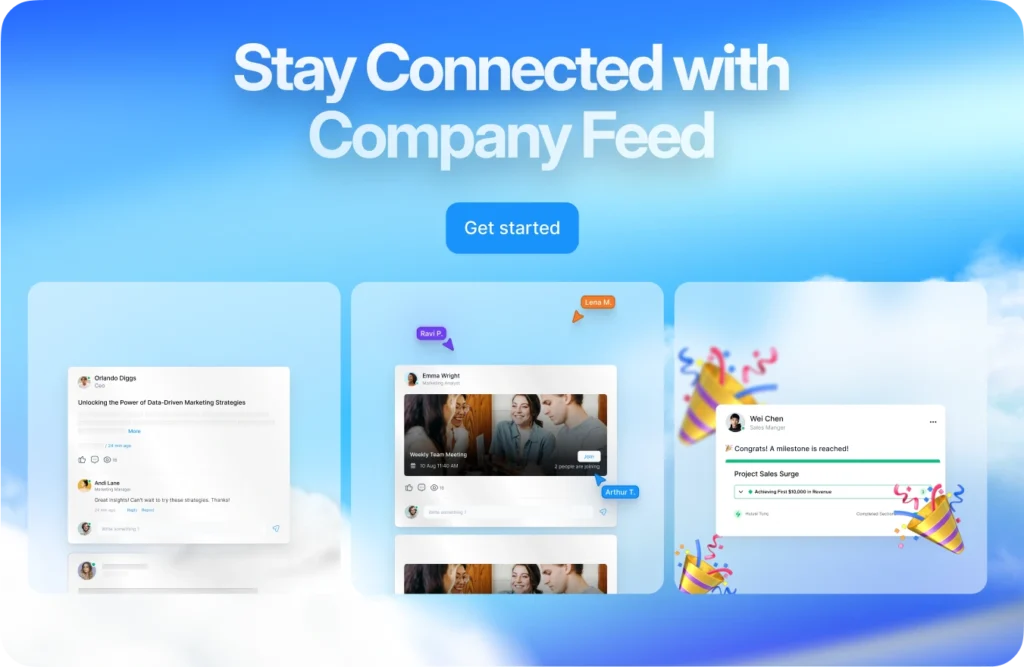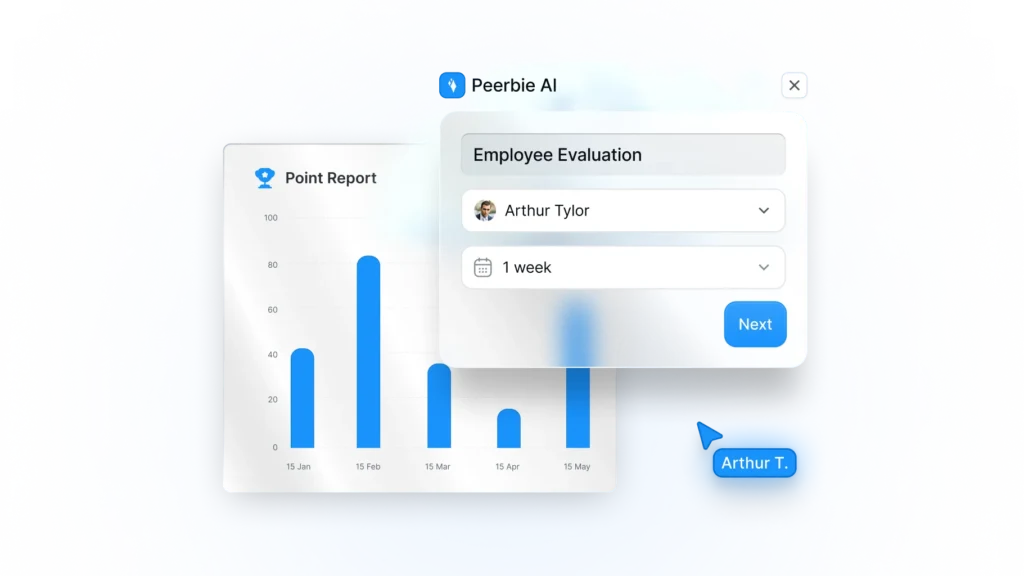How to Improve the Performance Management Process?

Performance management is a cornerstone of organizational success. It ensures that employees and teams align with business goals while continuously improving their skills and contributions. Yet, many organizations struggle with outdated, cumbersome processes that fail to drive real impact.
So, how do we create a robust, effective performance management system? This guide will provide actionable strategies to improve your process, focusing on clarity, technology, and a people-centric approach. Let’s dive in.
What Is a Performance Management Process?
The performance management process is a systematic approach used by organizations to enhance employee performance and align it with the organization’s strategic goals. It involves ongoing communication, evaluation, and development between employees and their managers. The process is designed to maximize productivity, ensure accountability, and support professional growth.

Key Steps in the Performance Management Process:
1. Goal Setting and Planning:
- Clearly define organizational, team, and individual goals.
- Align employee objectives with organizational strategy.
- Use frameworks like SMART (Specific, Measurable, Achievable, Relevant, Time-bound) to ensure clarity.
2. Continuous Feedback and Coaching:
- Maintain regular communication between employees and managers.
- Provide constructive feedback on performance and behavior.
- Encourage two-way dialogue to address challenges and identify areas for improvement.
3. Performance Monitoring:
- Track progress toward goals using key performance indicators (KPIs).
- Utilize tools like performance dashboards, self-assessments, and manager observations.
4. Performance Appraisal and Review:
- Conduct formal evaluations (e.g., quarterly or annual reviews).
- Assess individual achievements, strengths, and areas for improvement.
- Compare results against predefined benchmarks or goals.
5. Development and Training:
- Identify skill gaps and provide learning opportunities.
- Offer training, mentoring, or coaching programs to support growth.
- Create a personalized development plan for career advancement.
6. Reward and Recognition:
- Acknowledge and reward outstanding performance through promotions, bonuses, or other incentives.
- Foster a culture of appreciation to boost morale and engagement.
7. Addressing Underperformance:
- Collaboratively develop action plans for employees who fail to meet expectations.
- Provide additional resources, support, or training to improve performance.
8. Cycle Review and Adjustment:
- Evaluate the effectiveness of the performance management process.
- Make adjustments to ensure it remains relevant and aligned with organizational changes.
Together, these elements create a performance management process that supports continuous improvement, enhances employee engagement, and drives organizational success. They ensure alignment, accountability, and motivation throughout the workforce.

What are the benefits of implementing a performance process?
Implementing a performance management process offers a range of benefits for organizations and employees alike. Here are some key advantages:
For Organizations:
1. Alignment with Organizational Goals:
- Ensures individual and team efforts are aligned with the company’s strategic objectives.
- Improves focus on priorities, leading to better outcomes.
2. Enhanced Productivity:
- Encourages accountability and commitment to achieving goals.
- Identifies bottlenecks and areas for improvement, allowing timely interventions.
3. Data-Driven Decision Making:
- Provides measurable performance metrics to guide promotions, raises, and resource allocation.
- Helps in identifying high performers for leadership roles and succession planning.
4. Improved Employee Engagement:
- Regular feedback and recognition foster a culture of appreciation.
- Transparent processes increase trust and employee satisfaction.
5. Continuous Improvement:
- Highlights skill gaps and provides opportunities for training and development.
- Encourages innovation by addressing challenges proactively.
For Employees:
1. Clear Expectations:
- Employees gain a better understanding of their roles and what is expected of them.
- Reduces ambiguity and aligns individual goals with organizational objectives.
2. Opportunities for Growth:
- Identifies areas for professional development through feedback and reviews.
- Access to training and resources enhances career prospects.
3. Increased Motivation and Morale:
- Regular recognition and rewards boost confidence and job satisfaction.
- A clear link between performance and rewards drives motivation.
4. Enhanced Communication:
- Promotes open and regular dialogue between managers and employees.
- Encourages feedback-sharing, improving collaboration and mutual understanding.
5. Fair and Transparent Evaluations:
- Standardized criteria ensure fairness and equity in performance reviews.
- Reduces bias and creates a level playing field for all employees.
By implementing a robust performance management process, organizations can build a culture of accountability, continuous improvement, and mutual success. This not only drives business growth but also fosters an engaged and empowered workforce.

Performance Management Redefined with Peerbie
Performance management isn’t just about evaluating individual employee output—it’s about fostering a collaborative and dynamic work environment that drives organizational success. With Peerbie, businesses can go beyond traditional employee performance metrics by integrating tools that enhance team collaboration, streamline project management, and build a culture of continuous improvement. Peerbie empowers organizations to set clear goals, track progress in real time, and celebrate both individual and team achievements, ensuring alignment with the company’s broader strategic objectives.
By adopting Peerbie, businesses can create an inclusive performance ecosystem where communication thrives and innovation is encouraged. The platform’s user-friendly interface and advanced analytics provide managers with actionable insights to support both employee development and operational excellence. Peerbie goes beyond tracking performance—it helps build a workplace where talent is nurtured, goals are met collaboratively, and teams are inspired to achieve their best together.
A well-structured performance management process is a game-changer for organizations striving to achieve their strategic objectives while fostering a motivated and skilled workforce. By focusing on goal alignment, continuous feedback, development opportunities, and recognition, businesses can create an environment where employees thrive, and teams excel.
Modern tools like Peerbie elevate this process by integrating collaboration, real-time tracking, and actionable insights into one seamless platform. This ensures not just individual success but collective organizational growth. By redefining performance management through innovative solutions, companies can build a culture of accountability, continuous improvement, and shared achievement.
Investing in a robust performance management system is investing in your people—and in turn, the future success of your organization.

